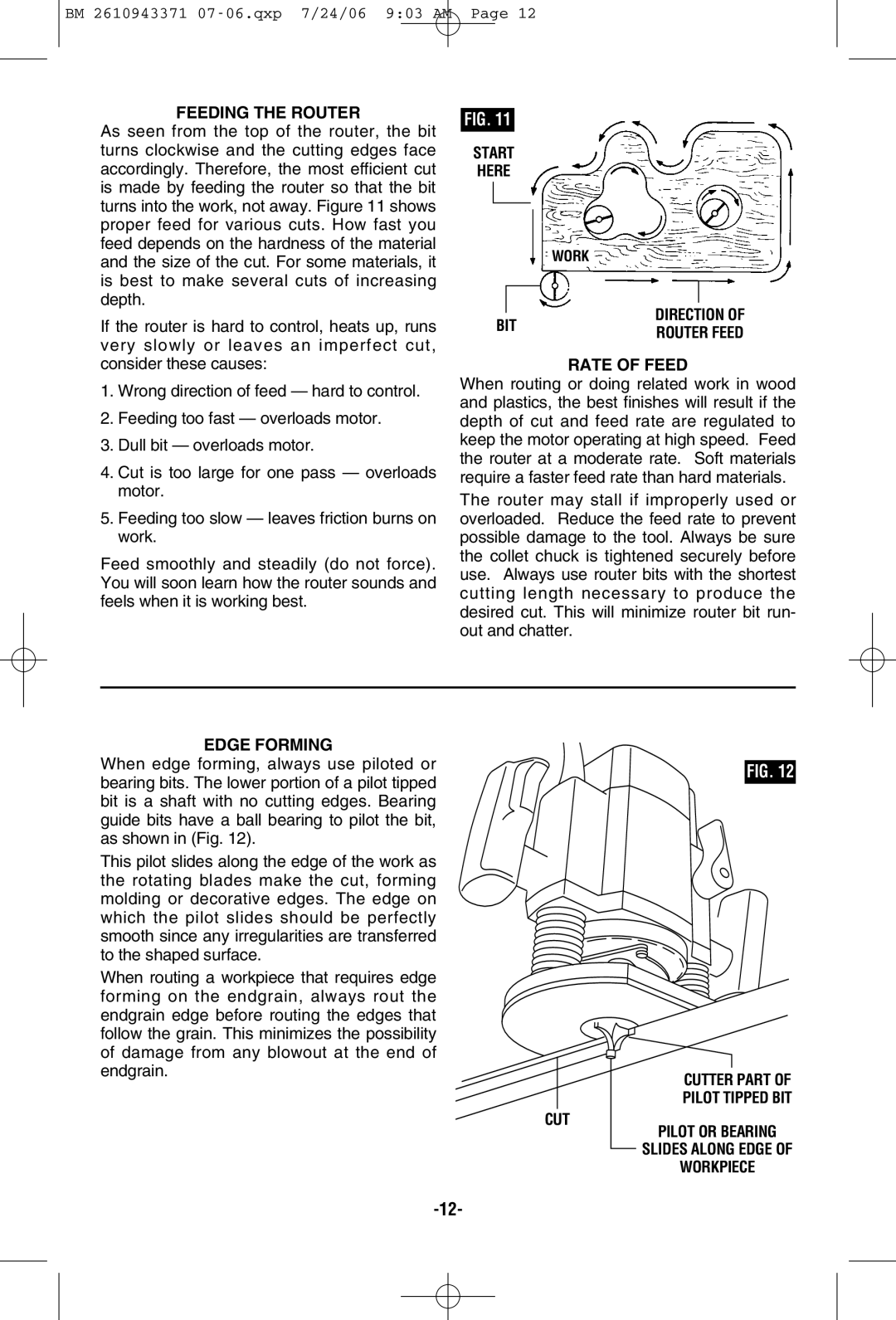1613AEVS specifications
The Bosch Power Tools 1613AEVS is a versatile and powerful fixed-base router designed for professional woodworkers and DIY enthusiasts alike. Renowned for its outstanding performance and durability, this router is a valuable tool for any workshop. Its powerful 2.0 HP motor delivers impressive routing capabilities, making it suitable for a wide range of tasks, from edge profiling to mortising and decorative work.One of the key features of the Bosch 1613AEVS is its variable speed control. This allows users to adjust the speed from 8,000 to 25,000 RPM, providing optimal performance for various routing applications. Whether working with softwoods or hardwoods, users can select the perfect speed to achieve clean, precise cuts while minimizing the risk of damage to the material.
The router also boasts a soft-start function, which gently ramps up the motor speed, allowing for smoother operation and reducing the potential for tool kickback. This is especially beneficial for beginners or those working with delicate materials. Additionally, the Bosch 1613AEVS is equipped with a constant response circuit that maintains speed under load, ensuring consistent results even when cutting tougher materials.
Another noteworthy characteristic of the 1613AEVS is its ergonomic design. The router features a comfortable grip and well-balanced body that reduces user fatigue during extended use. The integrated spindle lock allows for easy bit changes, while the included adjustable T-handle provides enhanced control and stability when routing.
For enhanced precision, the Bosch 1613AEVS comes with a transparent base that provides a clear line of sight to the workpiece. It also incorporates a dust extraction port that connects to standard vacuums, helping to keep the work area clean and free from debris.
In summary, the Bosch Power Tools 1613AEVS combines power, versatility, and user-friendly features. With its robust motor, variable speed control, soft-start technology, and ergonomic design, this router is well-suited for both professional and hobbyist woodworkers. Whether you're crafting intricate furniture pieces or simple decorative edges, the 1613AEVS is a reliable tool that delivers accuracy and performance.

